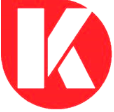How to Master SQL: From Basics to Advanced Level on Udemy (2023)
Mastering SQL From Basics to Advanced level on Udemy in 2023
Are you ready to embark on a journey to become a SQL expert? If so, you’re in the right place. Udemy offers a comprehensive SQL course titled “SQL : From Basics to Advanced,” and the best part is, you can access it with a special coupon code. In this article, we’ll delve into what this course has to offer and how it can help you unlock the power of SQL
Course Overview:
Course Title: SQL : From Basics to Advanced
Course Link: SQL : From Basics to Advanced on Udemy
Coupon Code: INSTA-POWER_BISQL
What Is SQL?
SQL, which stands for Structured Query Language, is a powerful tool for managing and manipulating data stored in relational databases. It’s a standard language used by database management systems like MySQL, PostgreSQL, SQL Server, and Oracle. SQL allows you to perform tasks such as querying data, updating records, and creating and modifying database structures.
Why Learn SQL?
SQL is a must-have skill for anyone working with data or databases. Whether you’re a data analyst, a software developer, or a business professional, SQL proficiency opens up a world of opportunities. Here are a few reasons why learning SQL is valuable:
- Data Management: SQL is essential for managing and extracting valuable insights from data.
- Database Administration: SQL skills are crucial for tasks like database design, optimization, and maintenance.
- Data Analysis: SQL is a foundation for data analysis, as it allows you to retrieve and manipulate data efficiently.
- Career Advancement: SQL proficiency is a valuable asset that can boost your career prospects in various industries.
Course Highlights:
Now, let’s take a closer look at what you can expect from the “SQL: From Basics to Advanced” course on Udemy:
- Comprehensive Curriculum: The course covers SQL from the ground up, starting with the basics and gradually progressing to advanced topics.
- Hands-On Practice: You’ll have ample opportunities to apply what you learn through practical exercises and projects.
- Real-World Scenarios: The course includes real-world examples and scenarios, helping you understand how SQL is used in professional settings.
- Experienced Instructor: Learn from an experienced instructor who can guide you through the complexities of SQL with ease.
- Lifetime Access: Once enrolled, you’ll have lifetime access to the course content, allowing you to revisit and review the material as needed.
- Certificate of Completion: After completing the course, you’ll receive a certificate of completion, showcasing your SQL expertise.
How to Use LinkedIn Effectively For Your Job Search in 2023
Who Should Take This Course?
This course is suitable for:
- Beginners who want to learn SQL from scratch.
- Intermediate learners looking to deepen their SQL skills.
- Data analysts, database administrators, and developers.
- Professionals aiming to enhance their career prospects in data-related roles.
-
Is the Axis MyZone Credit Card Right for You?
Unlock Exclusive Benefits with the Axis MyZone Credit Card! Are you looking for a credit card that offers unbeatable rewards on shopping, dining, and entertainment? The Axis MyZone Credit Card is your perfect entry-level companion, packed with amazing deals and benefits all at zero annual and joining fees! Why Choose Axis MyZone Credit Card? Additional…
-
Best Value Smartphones Under budget in 2025
Smartphones Under the Sun: Affordable Powerhouses on Amazon Hey there, tech enthusiasts! Are you on the hunt for a stellar smartphone without breaking the bank? Let’s dive into the world of Amazon’s finest budget-friendly options and find the perfect match for your needs. Latest Mobile Deals and Features 1. Vivo Y200e 5G Price:…
-
How to Enable Debugging in WordPress with Ease
WordPress Debugging: A Beginner’s Guide to Troubleshooting Like a Pro Hey there, fellow WordPress enthusiasts! I know that WordPress is usually a trusty companion, but sometimes, things just don’t go as planned. That’s where debugging comes in—it’s like having a superpower to uncover the hidden secrets behind those pesky errors. What is WordPress Debugging? Imagine…
Enroll Today and Unlock SQL Mastery:
SQL is a foundational skill for anyone working with data, databases, or software development. Whether you’re looking to advance your career, dive into data analysis, or simply gain a valuable skill, the “SQL: From Basics to Advanced” course on Udemy can help you achieve your goals.
With the special coupon code “INSTA-POWER_BISQL,” you can access this course at a discounted price. Don’t miss this opportunity to master SQL and open doors to a world of data possibilities. Enroll today and take the first step towards SQL proficiency!
100% Free Coupons





